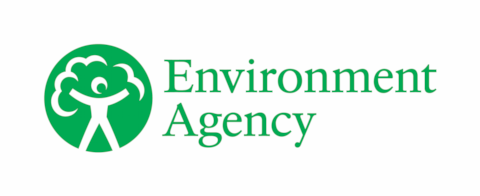Hertfordshire and North London water situation: January 2025 summary
Published 12 February 2025
Applies to England
1. Summary
In January, the Hertfordshire and North London area received 79mm of rain (135% of the long term average). River base flows increased during the month in chalk catchments, while in clay and urban catchments the start and end of the month saw notable flow peaks as a result of storms Floriane and Herminia. Groundwater levels continued their seasonal rise during January, with several sites in the exceptionally high band.
2. Rainfall
January was a fairly wet month in the Hertfordshire and North London area (the Area), receiving 79mm of rainfall, 135% of the long term average (LTA) with all 5 areal rainfall units ending the month in the above normal band. The most significant amount of rain fell at the beginning of the month during Storm Floriane, when on the 5 January, 26.2mm was recorded at Chenies (Chilterns East Colne unit). Other large rainfall totals were recorded on this day at Prestwood Reservoir, with 25.2mm of rain and at Markyate STW, which recorded 22mm of rain (both also in Chilterns East Colne). Fairly high rainfall totals were also recorded towards the end of the month due to Storms Eowyn and Herminia, when 18.6mm was recorded at Prestwood Reservoir on 26 January. Despite the heavy rainfall there were also a total of 13 dry days in January (less than 0.2mm of rain recorded).
3. Soil moisture deficit and recharge
Across the Area, soil moisture deficits (SMDs) decreased to 0mm during January, with all 5 areal units below their LTAs. All units in the Area also received effective rainfall above their LTAs. The highest effective rainfall was recorded in the Chilterns East Colne unit, however, North London recorded the highest percentage of effective rainfall in relation to the January LTA.
4. River flows
River base flows continued to increase during January, with 5 sites recording monthly mean flows in the exceptionally high band (all of which being located in chalk catchments). Panshanger (River Mimram) recorded its third highest mean flow for January, while Colney Street (River Ver) recorded its second highest mean flow for the month (records begin in 1952 and 1956 respectively). The most significant flow peaks occurred around the 5 and 27 January, during storms Floriane and Hermina. These flow peaks were experienced most notably in the Area’s clay and urban catchments like North London and the Roding.
During January, 16 flood alerts were issued in the Area, however, there were no flood warnings. Most of the alerts were issued on 5 January in response to the high rainfall, including the:
- Upper River Roding
- Middle River Roding
- Cripsey Brook in Epping Forest
- River Ingrebourne at Harold Park and Hornchurch
- River Lee at Hertford
- River Stort and Stansted Brook catchment
- Lower Lee tributaries
- Upper River Colne and Radlett Brook
- Middle River Colne
- River Pinn and Woodridings Stream
- Lower River Colne and Frays River
- Colne Brook at Iver and Colnbrook
5. Groundwater levels
Groundwater levels across the Area continued their seasonal increase during January, remaining high for the time of year, with 5 of 9 groundwater level indicator sites in the exceptionally high band. All other indicator sites ended January in the notably high band. In the Upper Lee Chalk, Lilley Bottom and Crescent Cottages recorded their highest January groundwater levels (records begin in 1979 and 1968 respectively). Also in the Upper Lee Chalk, Therfield Rectory recorded its highest January groundwater level since 1918 (records begin in 1883). Overall, compared to the Upper Lee Chalk, groundwater levels in the Mid-Chilterns Chalk were not as high compared with their historic levels.
6. Reservoir stocks
Reservoir stocks in the Lee Valley group decreased slightly during January, from 93% to 89% of live capacity. In the Lower Thames group, reservoir stocks started January at 95% of live capacity and finished the month with 96%.
7. Environmental impact
In the Colne catchment, the sources of the chalk rivers were essentially in the same locations as December, the:
- River Ver started flowing above Markyate
- River Gade started flowing above Hudnall Corner
- River Bulbourne was flowing upstream of Dudswell village
- source of the River Chess stayed upstream of Chesham
- River Misbourne flowed continuously from Mobwell pond
The chalk river sources in the Upper Lee saw some minor changes from their locations in December, the:
- River Mimram started flowing above Whitwell Gas Compound
- River Beane started flowing above Cromer
- source of the River Rib remained upstream of Hay Green, from where it flowed continuously
- River Ash (Herts) was flowing upstream of Brent Pelham, from where it flowed continuously
- source of the River Stort was still above Langley Lower Green
To protect the environment, during January a number of abstraction licence flow constraints were in force. This ranged between 1 and 12 per week, out of a winter maximum of 48.
Author: Groundwater and Hydrology, groundwaterhydrology@environment-agency.gov.uk
Contact Details: 03708 506 506
All data are provisional and may be subject to revision. The views expressed in this document are not necessarily those of the Environment Agency. Its officers, servants or agents accept no liability for any loss or damage arising from the interpretation or use of the information, or reliance upon views contained within.

